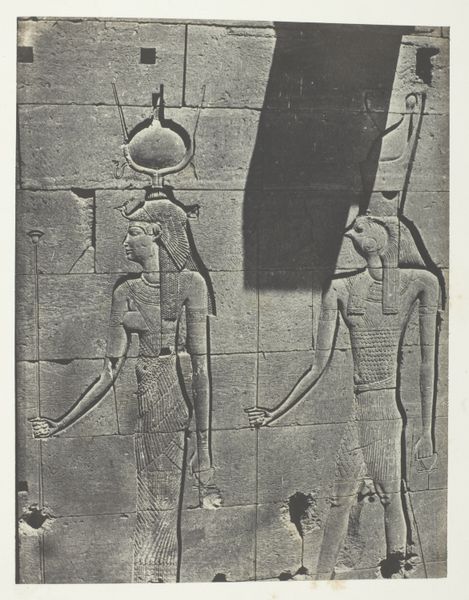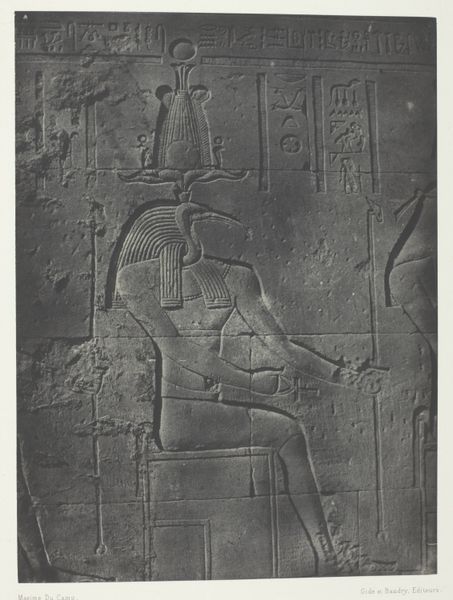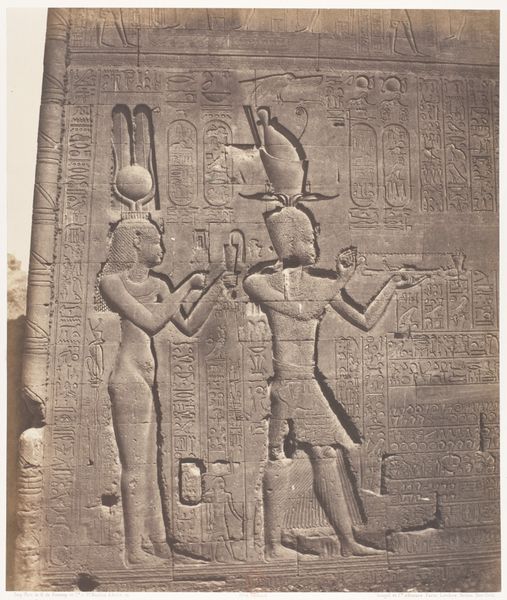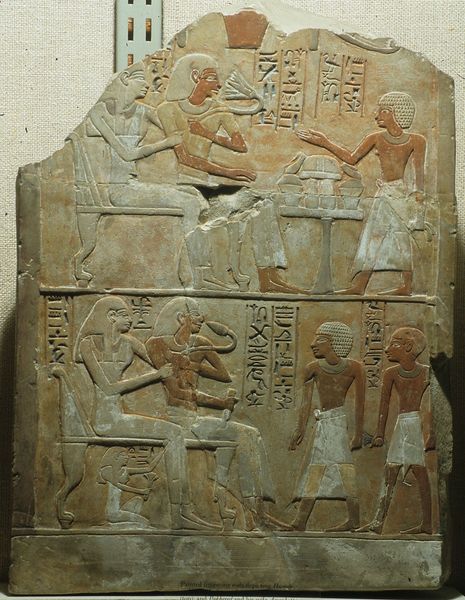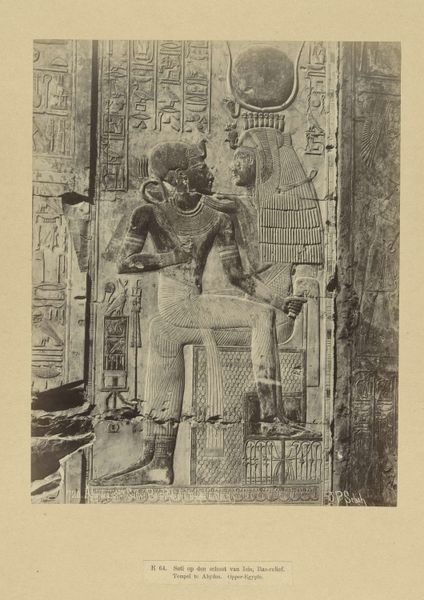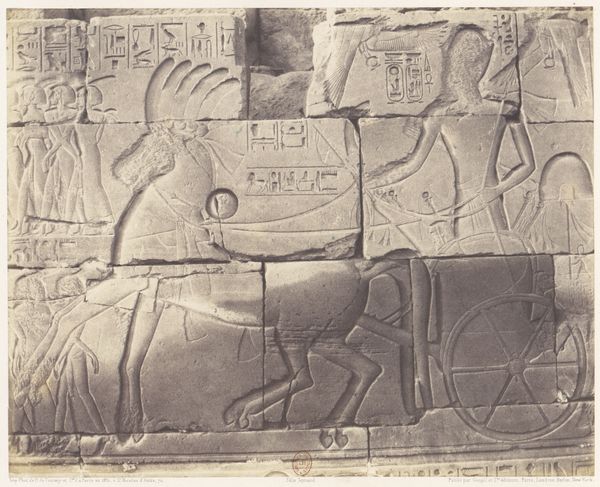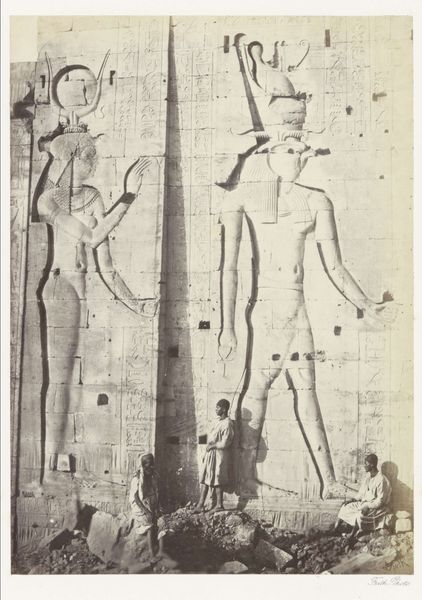
relief, photography
#
portrait
#
relief
#
ancient-egyptian-art
#
figuration
#
photography
#
ancient-mediterranean
#
history-painting
Dimensions: height 368 mm, width 266 mm, height 423 mm, width 326 mm
Copyright: Rijks Museum: Open Domain
Editor: This photographic print captures a relief from the Temple of Seti I in Abydos, Egypt, sometime between 1869 and 1889, credited to Henri Béchard. It's a remarkably detailed rendering of an ancient artwork. What strikes me most is how it offers a tangible link to the past, preserving details of the relief in a way that allows us to engage with the history depicted. What do you make of this photograph, especially considering its role in documenting and sharing cultural artifacts? Curator: The photograph presents not only a document of an ancient relief, but also an interesting artifact of 19th century European interests in ancient Egypt. It comes from a period when photography was still quite new and served an important function in circulating images of archaeological finds. Editor: So, it was like a form of early mass media shaping perceptions? Curator: Precisely. Images like this influenced scholarly interpretations and public understanding of Egyptian history and culture. Think about who had access to these images and the stories they reinforced or challenged about civilization, power, and cultural ownership. Does it evoke a sense of discovery or perhaps even of appropriation? Editor: It’s a bit of both, I think. There's definitely a sense of wonder and a desire to understand the past. But I also see a colonial undertone, like these images were, in a way, claiming ownership of Egyptian history for a European audience. Curator: That tension is central to understanding these images. It prompts us to consider the power dynamics inherent in the documentation and display of cultural heritage and the museum's own complex role in this narrative. We need to reflect on the role of institutions like ours when engaging with these images and with the artifacts they depict. Editor: This really changes how I view not just this image, but also the broader history of how we understand and interact with ancient cultures. Thank you! Curator: My pleasure. Looking at how images have been used and the intentions that drove their creation gives us new tools for interpreting our world.
Comments
No comments
Be the first to comment and join the conversation on the ultimate creative platform.

